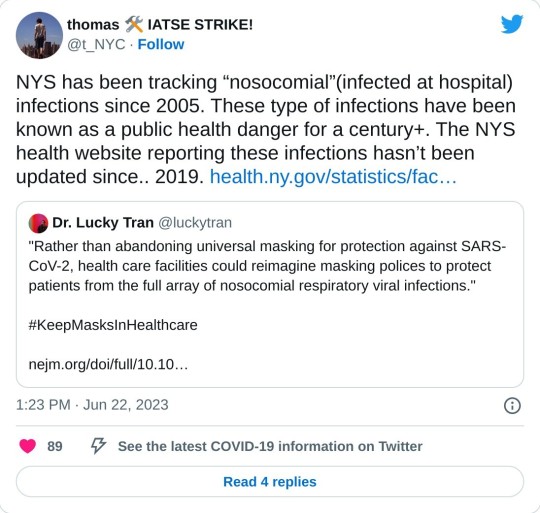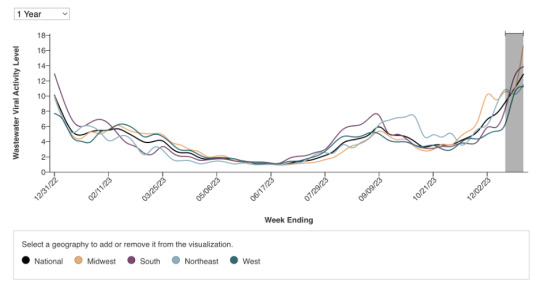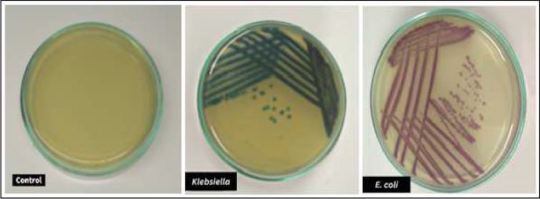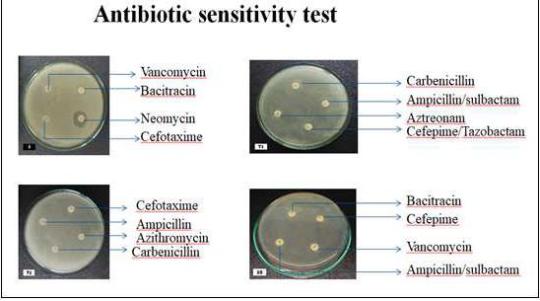#nosocomial infection
Text
AI/MAL vs. MDR: a new class of antibiotics discovered by machine learning
Infectious diseases, caused by transmissible pathogens including bacteria, eukarya, and viruses, continue to challenge scientists and clinicians despite advances in medicine and basic research over the past few decades. Limitations to the fast and accurate detection of infections, as well as expanding antimicrobial resistance, exacerbate these challenges. Basic research has aimed to address these…
View On WordPress
#antibiotics#antimicrobials#antiviral#Artificial Intelligence#chemical database#drug discovery#machine learning#multidrug resistance#nosocomial infection#synthetic biology
0 notes
Text

19 notes
·
View notes
Text
The Weather
All areas of the country are now at High or Very High levels of COVID Transmission.

According to the new CDC National Wastewater Surveillance System (NWSS) dashboard, all regions are experiencing increased COVID wastewater levels, with the Midwest being the highest. Nationally, wastewater levels are “very high.” Driven by the JN.1 variant, we are currently seeing the second highest wastewater levels since BA.1, the first Omicron wave in January 2022.

We continue to stress the importance of mitigating the spread of COVID, especially during this time of increasing transmission. Please continue to wear a high quality respirator mask (such as an N95) in indoor settings of any capacity, and postpone crowded events. In addition, make sure to take appropriate precautions when meeting with others.
Wins
Amidst this new surge, many hospitals – some responding to staffing shortages, and some responding to public pressure – have reinstated mask mandates.
We celebrate the work of organizers across the country including those at Care Not COVID Chicagoland, COVID Safe Maryland, COVID Advocacy NY, and MaskBlocs around the country who organized a call-in to hospitals last week to demand they reinstate – and make permanent – masking policies.
A coalition protest by Sacramento Jewish Voices for Peace, Sunrise Movement Sacramento, International Jewish Anti-Zionist network, Bay Area JVP, & Youth 4 Palestine Sac organized a fully masked (N95!) and tested (2 days in a row!) pro-Palestine protest at the CA State Capitol in Sacramento last week.
ACTUP’s New York chapter has voted to require and provide KN95 masks at all upcoming meetings and actions “due to the ongoing COVID-19 pandemic and recent surge, as well as to increase safety from surveillance at protests.”
Solidarity means we protect each other, and these organizers are showing us the way!
Variants
JN.1, a BA.2.86 descendent, is rising to prominence quickly in the United States. Nowcast estimates predict that by 1/6/2024, JN.1 will account for 61.6% of circulating variants. According to preliminary non-peer reviewed data, the newest (XBB.1.5) booster helps to protect against the JN.1 variant. Conversely, older vaccines did not offer significant protection against JN.1.
It is important to receive the updated booster, especially since uptake is currently low–according to a poll conducted by Gallup, only 29% of 6,000 participants surveyed received the updated vaccine as of December 7, 2023. This is in stark contrast to flu vaccine rates, polled at 49%. This is likely due to an imbalance in public health messaging–while efforts were poured into advertising the flu vaccine, not as much emphasis was placed on receiving the updated booster.

Hospitalizations
Weekly COVID hospitalizations continue to trend upward, now at 34,798 for the week ending December 30, 2023. The numbers for currently hospitalized patients with COVID are also increasing, currently at 25,430. In terms of regional trends, the Northeast and Midwest are seeing higher rates of hospitalization. When reviewing these numbers we must also remember that patients who are already admitted for other reasons and are suffering from nosocomial, or hospital-acquired infections, are not accounted for in this data.

Hospitals are overwhelmed. Healthcare workers are demanding support from administrators. Read this account of ER nurses at Montefiore Hospital in the Bronx who say that the hospital executives are refusing to open up vacant areas of the hospital to accommodate the surge in patients – leaving the ER dangerously overcrowded and forcing patients into hallway beds.
Long COVID
A new cross-sectional study published in Nature Communications found that Long COVID patients with post-exertional malaise (PEM) exhibit skeletal muscle changes that are exacerbated by exercise. PEM patients are also found to have unique pathophysiological changes, such as amyloid-containing deposits in muscle tissue. These findings contribute to mounting evidence that COVID infection can significantly damage the body, and more research is necessary in order to fully understand manifestations of Long COVID. If readers are curious, summarized findings can be found in this X (Twitter) thread, penned by one of the authors.
Long COVID research is important. This is why it is essential that all Long COVID research centers adhere to the strictest infection prevention protocols. Read this account of a person disabled by Long COVID who dropped out of a study because the study personnel refused to mask. We saw this same phenomenon last spring at Stanford during a study of Paxlovid’s impact on Long COVID rates.
Take Action
This week Jewish Currents put out a report on The Epidemiological War on Gaza, which amplified WHO’s January 2nd announcement that “there are currently 424,639 [reported] cases of infectious disease in Gaza,” an area with only 2 million residents total. With the ongoing destruction of hospitals and deprivation of food and water and environmental pollution from continued bombardment, the occupying forces have ensured the conditions for continued deaths even in times of ceasefire. Call your representatives and join a protest this week to demand a ceasefire and the reconstruction of Palestinian medical infrastructure towards fair health access for all peoples!
Let us support Massachusetts General Brigham Long COVID patients by telling the hospital to 1) meet all patient accessibility requests including wearing N95 respirators upon request and 2) make universal masking their new standard of care. They can be contacted through their contact form, or by calling 1-800-856-1983.
Rashida Tlaib sent out an email blast informing constituents of the current surge. The message included acknowledgment of COVID’s airborne nature, recommendation to wear a well-fitting mask, a link to access free tests through USPS, and information on updated vaccines and COVID transmission. Let’s contact Congresswoman Tlaib and thank her for this invaluable action!
Future Weather Reports
Starting next week, we will begin to publish the Weather Report on a bi-weekly basis. This will allow our team to focus on crafting action campaigns to push for a comprehensive public health approach to the pandemic, including mask mandates, paid sick leave policies, testing access, Long COVID research, next generation vaccines, indoor air quality regulations, and more. We hope to see you in our expanded actions to end the COVID pandemic soon to come!
#op#covid#covid-19#covid19#covid 19#coronavirus#covid pandemic#coronavirus pandemic#pandemic#covid news#covid isn't over#sars-cov-2#sars cov 2#long covid#people's cdc#pcdc#mask up#palestine#disability#ableism#covid variant#covid virus#covid variants#genocide#img#links#described in alt text
28 notes
·
View notes
Text
Flucloxacillin: another pencillin, this time the most commonly prescribed narrow-spectrum penicillinase-resistant penicillin in the UK. Apparently, it was not marketed much in the US and Canada, where dicloxacillin filled its role. Flucloxacillin is used almost exclusively for gram positive infections, especially Staph aureus, though it can be also be used for pre-op prophylaxis.
Zosyn (pip/tazo): One of the big guns. Like augmentin, this combo therapy includes both a penicillin and a beta-lactamase inhibitor; unlike augmentin, it covers pseudomonas. Zosyn is crucial for treating nosocomial infections and often one of the first drugs we reach for when empirically broadening antibiotics. It is also first line for neutropenic fever.
Vote for the best antibiotic
#antibiotic tournament#round 1#antibiotics#medicine#medblr#pharmacy#pharmblr#medical school#med student#med school
16 notes
·
View notes
Text
Enterococcus faecalis
As per wiki, "not to be confused with enterococcus faecium."
why in god's name are they so similarly named. I do not know. but it does change management.
Faecalis is more susceptible to penicillin and ampicillin. Faecalis is more virulent and more likely to cause IE than faecium. Faecium is also more likely to be resistant to ampicillin and vancomycin --> in the US: 80% to vanc, and 90% resistant to ampicillin.
It's a nosocomial common bug, so there aren't any cool case reports. If you walk into a ward, odds are you'll find someone with this. Not as common as staph or strep though.
Image source: bacteria under the microscope

E. Faecalis is gram positive cocci, (purple spheres), previously part of the streptococcus umbrella - if it makes it easier to remember - both appear in chains or pairs (rather than clusters like staph). Similar to strep it is catalase negative. Facultative anaerobe, so it will grow in both bottles. Faecalis is far more common than faecium, both live in the gut (think faeces). They grow at high salt concentrations, 6% (normal saline on the wards is 0.9%) and are usually non haemolytic.
Key thing to be aware of is that it can be a healthy part of your gut or genital tract but under the right circumstances for it - it can become pathogenic/disease causing. Further key thing: intrinsically resistant to bactericidal antibiotics hence they require synergism between a combination or prolonged duration in severe cases. like IE.
It's considered an opportunistic infection (for the lay public, it means when you're unwell or immunosuppressed, it becomes a problem). Increasingly it is a nosocomial infection (hospital acquired), 60% of cases in the US were acquired in hospital. They survive very harsh environments, including ethanol and can survive 10 mins at 60 degrees celsius and on surfaces from days to months. They are killed at 80 degrees or with 70% ethanol.

Similar to staph and strep, it can cause a variety of infections, including:
Infective endocarditis --> 3rd most common cause, 90% are faecalis other 5% are faecium (after staph aureus and strep viridans), subacute course, now more associated with TAVIs (elderly/frail/multimorbid patients). high mortality, 10-35%
UTIs - cause up to 20% of UTIs, but usually associated in hospital setting and with catheters/devices etc.
wound infections & OM (rarely)
line associated --> always replace lines if you can in sepsis, one cause of bacteraemia is the line
2nd or 3rd most common cause of nosocomial Utis, sepsis and wound infections (less often: diabetic ulcers, prosthetic joints)
less common: meningitis - and usually associated with shunts and neurosurgical procedures --> anything to do with devices and hospital. Mortality risk of 20%
odd association: strongyloides hyperinfection (remember this increases risk for bacteraemia), as post earlier.
sepsis/bacteraemia mortality risk is 25%
bottom line: high mortality in severe disease
Epidemio:
more likely to be found in the elderly populations who are multi-morbid and less independent in their activities of daily living.
Special powers:

No toxins (like staph or strep), but have inherent antibiotic resistance or are amenable to this and are very durable/hardy. Ability to form biofilms - hence attraction to lines and devices and staying there. This limits abx penetration allows them to persist. They gain resistance by their ability to pick up and transfer mobile gene elements like plasmids via conjugation etc. Abx including: cephalosporin, clinda, TMP-SMX, aminoglycosides like gent.
It is becoming more notorious for resistance particularly vancomycin resistant enterococcus faecalis (also not to be confused with VRE - Patients who were recently hospitalised or institutionalized are often swabbed for this, but this is actually E. faecium they're referring to). increased risk for this include previous antibiotics use (eg cephalosporins, vancomycin), due to disrupted gut biome, and exposure risk - more likely to occur if you've been recently hospitalised, require routine access to the wards (i.e. dialysis) etc. Also increased association with devices (like pacemakers), diabetics and stomach acid suppression from PPIs.
Investigations
Relevant imaging i.e. CT for abdominal collections, and culture/staining. sensitivities are an absolute must including aminoglycoside resistance, pencillin and vanco, which most labs will automatically do anyway when it's identified, teams just gotta remember to chase. other possibilities include PCR or 16s rRNA sequencing
Interesting additional work up: Colonoscopies. Some reports are starting to recommending doing this routinely if no source is found in cases of bacteraemia or IE. As there is an increasing association with neoplasms from the gut. Similar to guidelines for strep bovis.
Management
in general UTIs, wound infections etc, most are susceptible to penicillins and ampicillin, so you can treat with either.
Management of beta lactam resistant enterococcus:
- resistant against beta lactams --> refer to immunology for desensitisation, vanco is not as effective against enterococci, duration is 6 weeks in severe infection
Vanco resistant (your local infectious diseases team will be involved)
daptomycin, linezolid --> equally effective, tigecycline (last resort/salvage)
Treatment in IE --> synergism is key for bacteriocidal effect (durability)
in case of bacteraemia, try the denova calculator to determine risk of IE - Duration of symptoms, Embolizations, Number of positive cultures, Origin, valve disease, and Auscultation murmurs
if susceptible, it's intermittent doses of benzylpenicillin or continuous infusion at 2.4 g IV plus gentamicin (if concerning for kidneys, shorten the duration to 2 weeks) for approx 4-6 weeks
--> unless there's high level resistance to aminoglycosides
or if resistant as above options
issue with aminoglycosides -> ototoxicity and nephrotoxicity, requires frequent monitoring and caution in elderly
Resources:
Pathogen data sheet - Canadian government
StatPearls
Australian therapeutic guidelines - paywall, unless you're at an Australian hospital/medical school
Uptodate - always the gold standard, but is behind a paywall unless you have institutional access
Wikipaedia
#infectious diseases#internal medicine#medblrs#medblr#microbiology#infectious disease#enterococcus#enterococci#e faecalis#enterococcus faecalis
3 notes
·
View notes
Text


Here's the wheelchair I want and need. Base price is $3,900.00 and with customization estimate closer to $5,000. Wheelchairs last about 5 years and then need new parts or to be replaced entirely depending on wear.
There is a financing option so I could try that. Either way I will need help. So at some point I'll be creating a card.co or post if anyone wants to and can help me 🩷 I've been needing it for a year.
I am making an attempt to go through my insurance first. It is difficult because so many medical facilities do not have universal masking policies so risk of nosocomial infection is high for me and would be disastrous.
Medical appointments are also exhausting. And the chance of my insurance deeming this device unnecessary is also high. Meanwhile my condition and independence continues to worsen.
I feel really desperate and am suffering a lot. It would help me so much 💔 I shouldn't have to jump through a bunch of hoops for things that will improve my health and quality of life. No one should have to.
#Wheelchair#Medical devices#Mobility aids#Mobility aid#Helio C2 HD#ME#Myalgic Encephalomyelitis#Long covid#Mobility issues#Disabled#Streamer#Disability#Disabled streamer
2 notes
·
View notes
Text

Direct effects of the war (medical point of view)
1_Martyrs: More than 5,700 and More than 20 thousand people were injured
2_Burns that may be critical or even fatal
3_Disabilitise, different fractures, injuries from rubble
4_ being under rubble for a long time may cause several complications as prolonged bleeding, crush injury syndrome, gangrene, fatal sepsis
...
Siege and displacement
1_INFECTIONS
the main health problem occurs in overcrowded
Poor sanitation, hygiene resulting from lack of clean water
*Skin infections: bacterial and fungal especially in infants
*Respiratory infections as common cold, influenza, COVID, respiratory syncytial virus and many other microorganisms find excellent environment and time for spread
*Gastrointestinal infections as typhoid, Rota virus affect infants, children complicated by dehydration
*The most vulnerable groups to infections are neonates and infants,
Infections in this age group may cause meningitis septicemia, multiple organ failure and death
...
2_Malnutrition
* The most vulnerable group to shortage of food and water is infants below 2 years
*Exclusive Breastfeed infants are liable to malnutrition, dehydration as a result of starving mother, or stressed scared mother
*Artificial fed infants also liable as a result of shortage of clean water, artificial milk
*According to WHO good nutrition is extremely important in first 1000 day of child life, malnutrition can cause lifelong mental, physical, effects
*Protein energy malnutrition can occur with long duration siege
*Malnutrition decease body immunity, increase liability to infections
3_ children with chronic disease deteriorating in these conditions as children with asthma, cardiac problems, epilepsy, with no enough medical care, depletion of drugs
4_massive psychological effects on children
*Panic attacks
*PSTD
*Anxiety and depression
*Speech disorders as stuttering, speech delay
5_children in hospitals
*Shortage of electricity leads to
Neonatal care units to stop
Pediatric intensive care units to stop
*Depletion of O2 is fatal to neonates, children depending on it to live
*Shortage of water ، sterile tools in hospitals
Cause nosocomial infections to spread in a child with already low immunity
*Shortage of important drugs as antibiotics, important medical tools as Cannulas for IV fluids and drugs, endotracheal tubes for mechanical ventilation are fatal in some cases
#palestine#gaza#israel#medical aid#middle east#free palestine#فلسطين#anixety#anixiety#depression#jerusalem#i stand with palestine#PSTD
5 notes
·
View notes
Text
completely absurd how they're trying to repeal laws about nosocomial infections, repeal protections, make it harder for people to sue. and have the audacity to blame patients who sue for rising medical costs.
#cw medical abuse#cw medical neglect#had to literally watch a friend last week go from stable#coherent#in palliative care#to becoming completely catatonic due to a missed infection in their tubing#and now they're dying. no last conversations. nothing. 48 hours at best to live and in tremendous pain.#im so overwhelmed#im so upset#it's just too much to bear and it all happened so quickly#i was making plans to see them in palliative care#now im making plans to come up for their funeral instead
3 notes
·
View notes
Text
At this time, no further orders will be issued for anti-epidemic measures against Covid-19, given the decrease in the spread and severity of the new coronavirus infection in Bulgaria, the country’s Health Ministry said in a statement on November 16.
For many weeks, Bulgaria’s caretaker Health Minister Assen Medjidiev has renewed a limited set of measures, such as mandatory mask-wearing in hospitals, with the latest extension expiring on November 16.
The Health Ministry said that as of November 16, the 14-day morbidity in Bulgaria is 69.62 cases per 100 000 population, and the decline in the number of newly registered persons reported since mid-October was continuing.
To date, the number of hospitalized patients with Covid-19 is 541, with 59 of them in intensive care.
The ministry said that it was not held that there was a burden on the health system, as 4.8 per cent of the hospital bed capacity was occupied compared to the hospital beds designated for treatment during the previous pandemic waves.
There was a 20 per cent drop in the number of newly hospitalised people on a weekly basis since the beginning of November.
In view of the entry into the autumn-winter season and the increase in the incidence of acute respiratory diseases, the regional health inspectorates should inform the medical facilities and strictly monitor compliance with the measures for the prevention and control of nosocomial infections.
The Ministry of Health said that it was continuing to monitor the development of the pandemic, and in the event of a noticeable rise, the introduction of anti-epidemic measures would be discussed again with a view to protecting public health and reducing the impact of the coronavirus infection on the health system, as well as to prevent the simultaneous epidemic spread of two pandemic diseases – flu and Covid-19.
“Vaccination against Covid-19 and influenza remains the safest way to protect against severe illness, hospitalisation and long-term health consequences,” the Health Ministry said.
#nunyas news#finally on the way back out#bulgaria was one of the last places to get hit#were dealing with a flu epidemic so everyone was already taking precautions#first 6 months or so I was thinking they might ride it out
8 notes
·
View notes
Text
TBC, the pandemic no one talks about in need for new solutions: unawareness or misleading?
TBC, the pandemic no one talks about in need for new solutions: unawareness or misleading?
Tuberculosis (TB) is an infectious disease caused by Mycobacterium tuberculosis also called Bacillus of Koch, from the name of the scientist who discovered it in 1882. There are 5 varieties: human, bovine, avian, murine, cold-blooded animals; of these only the first 2 are of importance in human pathology. Worldwide, TB is the leading infectious cause of morbidity and mortality in adults, and…
View On WordPress
#antibiotics#antifolate drugs#antitubercular drugs#clofazimina#drug discovery#drug repurposing#fatty acid synthesis#isoniazide#linezolid#lung disease#multiresistance#niclosamide#nosocomial infection#pretomanid#public health#tuberculosis
0 notes
Text
#polls#tumblr polls#question#dating#dating questions#opinion#what do i do#hospice#death and dying#relationships
3 notes
·
View notes
Text
Antiseptic Bathing Product Market: Good Value & Room to Grow Ahead Seen

Advance Market Analytics added research publication document on Worldwide Antiseptic Bathing Product Market breaking major business segments and highlighting wider level geographies to get deep dive analysis on market data. The study is a perfect balance bridging both qualitative and quantitative information of Worldwide Antiseptic Bathing Product market. The study provides valuable market size data for historical (Volume** & Value) from 2018 to 2022 which is estimated and forecasted till 2028*. Some are the key & emerging players that are part of coverage and have being profiled are Ecolab (United States), 3M (United States), Medline Industries (United States), Becton Dickinson & Co. (United States), Reyanard Health Supplies (New Zealand), Procter & Gamble (United States), Air Liquide (France), Colorox Company (United States), Stryker Corporation (United States), Reckitt Benckiser (United Kingdom).
Get free access to Sample Report in PDF Version along with Graphs and Figures @ https://www.advancemarketanalytics.com/sample-report/166811-global-antiseptic-bathing-product-market
Antiseptic Bathing Products are primarily used for wound infection prevention majorly the Surgical Site Infections (SSIs) such as Nosocomial Infection or the Hospital-Acquired Infections (HAIs), these Infections are highly common in Hospitals and Surgical centers. The spread of such infections incurs high treatment costs to the Healthcare Institution, this has derived the demand for Antiseptic Bathing Products across the globe. Antiseptic Bathing Products contains Chlorhexidine Gluconate (CHG), a disinfectant highly effective to prevent infections.
Keep yourself up-to-date with latest market trends and changing dynamics due to COVID Impact and Economic Slowdown globally. Maintain a competitive edge by sizing up with available business opportunity in Antiseptic Bathing Product Market various segments and emerging territory.
Influencing Market Trend
Increasing Expenditure on Healthcare
Market Drivers
Prevalence of Surgical Site Infections
High Treatment Cost for Surgical Site Infections
Opportunities:
Growth in Healthcare infrastructure Due to Pandemic
Challenges:
Frequent usage Promotes Growth of Antiseptic Resistant Bacteria
Have Any Questions Regarding Global Antiseptic Bathing Product Market Report, Ask Our Experts@ https://www.advancemarketanalytics.com/enquiry-before-buy/166811-global-antiseptic-bathing-product-market
Analysis by Type (Antiseptic Towels, Antiseptic Wipes, Antiseptic Liquid Solution, Antiseptic Soap, Others (Lotions)), Application (Hospitals, Clinics, Surgery Centers), Distribution Channel (Offline, Online)
Competitive landscape highlighting important parameters that players are gaining along with the Market Development/evolution
• % Market Share, Segment Revenue, Swot Analysis for each profiled company [Ecolab (United States), 3M (United States), Medline Industries (United States), Becton Dickinson & Co. (United States), Reyanard Health Supplies (New Zealand), Procter & Gamble (United States), Air Liquide (France), Colorox Company (United States), Stryker Corporation (United States), Reckitt Benckiser (United Kingdom)]
• Business overview and Product/Service classification
• Product/Service Matrix [Players by Product/Service comparative analysis]
• Recent Developments (Technology advancement, Product Launch or Expansion plan, Manufacturing and R&D etc)
• Consumption, Capacity & Production by Players
The regional analysis of Global Antiseptic Bathing Product Market is considered for the key regions such as Asia Pacific, North America, Europe, Latin America and Rest of the World. North America is the leading region across the world. Whereas, owing to rising no. of research activities in countries such as China, India, and Japan, Asia Pacific region is also expected to exhibit higher growth rate the forecast period 2023-2028.
WHO Guidelines on Hand Hygiene in Healthcare; The Guidelines Emphasizes on the Appropriate Methods on use of Different Sanitary Products including Alcohols & Antiseptics Based on factors Such as Skin Type, Treatment etc. WHO Also Restricts from Routine usage of Antiseptic Bathing Products on Newborns.
Table of Content
Chapter One: Industry Overview
Chapter Two: Major Segmentation (Classification, Application and etc.) Analysis
Chapter Three: Production Market Analysis
Chapter Four: Sales Market Analysis
Chapter Five: Consumption Market Analysis
Chapter Six: Production, Sales and Consumption Market Comparison Analysis
Chapter Seven: Major Manufacturers Production and Sales Market Comparison Analysis
Chapter Eight: Competition Analysis by Players
Chapter Nine: Marketing Channel Analysis
Chapter Ten: New Project Investment Feasibility Analysis
Chapter Eleven: Manufacturing Cost Analysis
Chapter Twelve: Industrial Chain, Sourcing Strategy and Downstream Buyers
Read Executive Summary and Detailed Index of full Research Study @ https://www.advancemarketanalytics.com/reports/166811-global-antiseptic-bathing-product-market
Highlights of the Report
• The future prospects of the global Antiseptic Bathing Product market during the forecast period 2023-2028 are given in the report.
• The major developmental strategies integrated by the leading players to sustain a competitive market position in the market are included in the report.
• The emerging technologies that are driving the growth of the market are highlighted in the report.
• The market value of the segments that are leading the market and the sub-segments are mentioned in the report.
• The report studies the leading manufacturers and other players entering the global Antiseptic Bathing Product market. Thanks for reading this article; you can also get individual chapter wise section or region wise report version like North America, Middle East, Africa, Europe or LATAM, Southeast Asia.
Contact US :
Craig Francis (PR & Marketing Manager)
AMA Research & Media LLP
Unit No. 429, Parsonage Road Edison, NJ
New Jersey USA – 08837
Phone: +1 201 565 3262, +44 161 818 8166
[email protected]
#Global Antiseptic Bathing Product Market#Antiseptic Bathing Product Market Demand#Antiseptic Bathing Product Market Trends#Antiseptic Bathing Product Market Analysis#Antiseptic Bathing Product Market Growth#Antiseptic Bathing Product Market Share#Antiseptic Bathing Product Market Forecast#Antiseptic Bathing Product Market Challenges
0 notes
Text
Understanding Liver Function Tests (LFT) at PACE Hospitals Hyderabad, India
What is an LFT Blood Test?
An LFT, or Liver Function Test, is a group of blood tests used to assess your liver's health and function. The liver is a vital organ responsible for various tasks, including filtering toxins from your blood, producing proteins, and metabolizing nutrients. An LFT measures the levels of enzymes, proteins, and bilirubin in your blood. These levels can indicate potential liver damage or disease.
Why Get an LFT at PACE Hospitals?
Doctors at PACE Hospitals may recommend an LFT for various reasons, including:
Diagnosing Liver Disease: If you experience symptoms like fatigue, nausea, abdominal pain, or jaundice (yellowing of the skin and eyes), an LFT can help identify underlying liver problems.
Monitoring Liver Health: If you have existing liver conditions like hepatitis or fatty liver disease, regular LFTs help monitor your condition and treatment effectiveness.
Risk Assessment: If you have risk factors for liver disease, such as diabetes, obesity, or heavy alcohol consumption, an LFT can assess your potential for developing liver problems.

Benefits of LFTs at PACE Hospitals
PACE Hospitals offer comprehensive LFT services with several advantages:
Experienced Staff: Our laboratory department is equipped with trained professionals to ensure accurate and efficient testing.
Advanced Technology: PACE Hospitals utilizes advanced equipment to provide reliable and timely test results.
Holistic Care: The LFT results are interpreted by your doctor within the context of your medical history and symptoms for a personalized treatment plan.
Preparing for an LFT
LFTs typically require minimal preparation. However, your doctor may advise you to fast for a specific time beforehand. Informing your doctor about any medications you are taking is also crucial, as some medications can affect the test results.
Factors that could interfere with liver function test
Haemolysis (the rupture of red blood cells), icterus (bile deposition in the skin during jaundice), and lipemia (the presence of excess fats/lipids in the blood) are the most common factors interfering with laboratory tests.
Liver function test procedure
The doctor may recommend a liver function blood test to an individual in order to understand his/her chances of getting a liver disease for a variety of reasons, especially if the patient falls under a potential risk population such as:
Diabetics
Hypertensives
Obese individuals
Patients suffering from lupus,
Any cancer patients, especially colon cancer,
Alcoholics etc
The doctor can also prescribe blood test for liver function to monitor the ongoing treatment/prognosis in patients with liver disease, such as:
Liver inflammation – to understand the history of hepatitis
Liver cancer
Liver injury
Liver transplant
Infectious hepatitis,
Liver cirrhosis (end-stage liver disease), etc
Upon observing the sign and symptoms and taking the subjective evidence from the patient, the doctor may prescribe a blood test for liver function.
Before the liver function test
The patient is supposed to ask questions regarding the test to the doctor and get doubts rectified.
The payment for the test must be made.
Around 10-12 hours of fasting is necessary before attending the test.
Since the test is usually done on the arm, a short-sleeved or sleeveless shirt is better.
During the liver function test
Upon reaching the specimen collecting lab in the hospital, the phlebotomist (technician) sterilises the area on the patient’s body through which the blood is extracted to avoid any nosocomial (hospital-acquired) infection at the puncture site.
A tourniquet will then be tied around the arm (above the elbow) to facilitate the visibility of veins and blood pooling.
A clean, sterilised hypodermic needle is utilised to extract blood (appropriately 5 ml) collected in a sterilised tube.
After the liver function test
Once the blood is extracted, a small piece of cotton may be provided by the phlebotomist to arrest the bleeding. In some centres, medical plaster may be applied to achieve the same result.
The patient is advised to retain the arm in the folded position for 2-5 min.
The patient is then free to leave and break the fasting.
The patient may need to refrain from lifting heavy objects for at least 24 hours.
Very rarely, complications may arise, such as fatigue, bleeding, bruising, or soreness at the site. In case of severe cases, medical consultation must be done.
Liver function test in pregnancy
Liver function tests are a part of the common tests done during pregnancy to understand and correct the course of a healthy pregnancy. Pregnancy-related illnesses are the most common cause of abnormal liver function tests during pregnancy, especially in the third trimester. The most prevalent is the pre-eclampsia-related condition (high blood pressure during pregnancy).
The others include:
Sickle cell disease (hereditary anaemia with crescent-shaped red blood cells)
Hepatitis (inflamed liver)
Acute fatty liver of pregnancy (excess fat accumulation in the liver during pregnancy)
HELP syndrome (a serious complication of high blood pressure during pregnancy)
To confirm a diagnosis during pregnancy, the following are of vital importance
The age of pregnancy
The levels of various liver function tests (for both pregnancy-specific and pregnancy-non-specific illnesses)
Learn More About LFTs at PACE Hospitals
For more information about LFTs or to schedule an appointment, contact PACE Hospitals today. Our dedicated staff is here to address your questions and guide you towards optimal liver health.
0 notes
Text
Antibiotic Resistance in Multidrug-Resistant Bacteria: Bangladesh Study

Abstract
Antibiotic-resistant bacterial strains are widespread in hospitals and intensive care units. This poses a serious threat to human health as the effectiveness of many antibiotics has been diminished by the emergence of resistant strains. The overuse of β-lactam antibiotics has led to the rise of antibiotic-resistant bacteria, including Extended-Spectrum β-Lactamase (ESBL) producing strains. However, ESBL screening is not commonly performed in Bangladesh, despite the growing prevalence of antibiotic resistance. Multidrug-resistant strains, particularly those carrying the Integron integrase 1 gene is responsible for antibiotic resistance. Horizontal integron transfer is one of the key factors that can contribute to the emergence of multidrug-resistant (MDR) bacteria. In this study, antibiotic sensitivity tests were conducted using 25 antibiotics. It was found that E. coli and Klebsiella both showed resistance to Aztreonam, Ampicillin/Sulbactam, Amoxyclav, Cefepime, Cefepime/Tazobactam, Ampicillin and Cefotaxime antibiotics. Our findings suggest that integron is common among MDR isolates and that they can be used to identify MDR isolates. As a result of the possibility of a widespread outbreak of MDR isolates, molecular surveillance and integron sequencing in other parts of the country is advised. The purpose of this study is innovation to create new antibiotics and alternative treatments to address antibiotic-resistant bacteria.

Introduction
Antimicrobial resistance poses a growing threat to human health and medical treatments and rising multidrug-resistant nosocomial infections in hospitals. Prompt treatment is crucial for vulnerable individuals at risk of bacterial infections. Viral infections are more likely to be the source of localized redness, swelling, and discomfort (Murray et al., 1998).
Antimicrobial resistance in bacteria is a complicated process involving a variety of different mechanisms. Susceptible bacteria can develop resistance through mutations or the transfer of resistance genes found on mobile DNA elements like integron (Barlow et al. 2004, Normak & Normak 2002). This, integron play a crucial role in the spread of antibiotic resistance, especially in Gram-negative bacteria by attaching to mobile genetic elements like transposons and conjugative plasmids, resistance integron transmit antibiotic resistance. (Mazel, 2006). Integron share antibiotic resistance gene cassettes predominantly through convergent evolution. Mobile integron has had a considerable impact on the spread of antibiotic resistance, particularly in Gram-negative bacteria (Davies et al., 2010). From the pool of these environmental genetic elements that is available, Integron has amassed a wide variety of resistance genes. Furthermore, their prevalence has significantly increased, increasing the possibility of interactions with other DNA and the emergence of additional, more complex mobile elements that are resistant to different antibiotic classes, disinfectants, and heavy metals (Gillings & Stokes 2012).

Class 1 integron are major contributors to antibiotic resistance in Gram-negative bacteria like Klebsiella and E. coli. They evolve due to exposure to selection agents in human-populated areas and natural environments, acquiring advantageous genes. The presence of resistance gene cassettes within class 1 integron is linked to antibiotic resistance. Addressing this problem requires essential research and intervention to combat the spread of antibioticresistant microorganisms. Ongoing development and dissemination of antibiotic resistance in Gramnegative bacteria like Klebsiella and E. coli class 1 integron play a crucial role. Their evolution is fueled by persistent exposure to selection agents in both human-populated areas and natural environments, leading to the acquisition of beneficial genes. The presence of resistance gene cassettes within class 1 integron is closely associated with antibiotic resistance. To effectively combat antibiotic-resistant microorganisms, it is essential to prioritize continuous research and innovation. Class 1 integrons are commonly found in various Gram-negative bacteria such as Acinetobacter, Vibrio, Aeromonas, Proteus, Burkholderia, Alcaligenes, Campylobacter, Enterobacter, Citrobacter, Klebsiella, Mycobacterium, Pseudomonas, Serratia, Salmonella, Shigella, and Escherichia coli (Yu G, Li Y and Liu X. 2013). Several studies have investigated prevalence of integron in MDR Escherichia coli and Klebsiella isolates around the world. These studies have identified a significant link between the presence of integrons and antibiotic resistance.
The study of integron aims to effectively combat antibiotic resistance by developing precise drugs that can be tailored to individual patients at a low cost, resulting in faster recovery times. With the emergence of antibiotic-resistant bacteria posing a significant threat to public health, there is a growing global interest in exploring integron profiles for the design of novel drugs that can safeguard both human and economically valuable animal populations. By understanding the intricate mechanisms of integron, scientists are hopeful of discovering innovative drugs that can tackle antibiotic resistance, thereby protecting human health and ensuring the well-being of economically important animals. This renewed focus on integron holds the potential to revolutionize the field of medicine and pave the way for personalized and cost-effective antibiotic treatments.
Source : Antibiotic Resistance and Integron Prevalence among Multidrug-Resistant Bacterial in Bangladesh. Molecular Pathology Laboratory, Institute of Biological Sciences, University of Rajshahi, Rajshahi-6205, Bangladesh
1 note
·
View note
Text
Hospital coffee machines get a clean bill of health.
Healthcare workers will be relieved to know that hospital coffee machines are not responsible for spreading disease and a general ban doesn’t seem necessary, finds a study published in The BMJ.
In a bid to eliminate hospital acquired (nosocomial) infections, various objects have been investigated as breeding grounds for bacteria including doctors’ ties and even hospital Bibles.
But despite…

View On WordPress
0 notes
Text
Antimicrobial Medical Textiles Market Worth $799.7 Million By 2024
The global antimicrobial medical textiles market size is expected to reach USD 799.7 million by 2024, expanding at a CAGR of 7.4%, according to a new report by Grand View Research, Inc. Rising prevalence of chronic diseases, an upsurge in the nosocomial infections worldwide, and growing awareness towards better healthcare practices are projected to fuel the demand for the product over the…
View On WordPress
0 notes